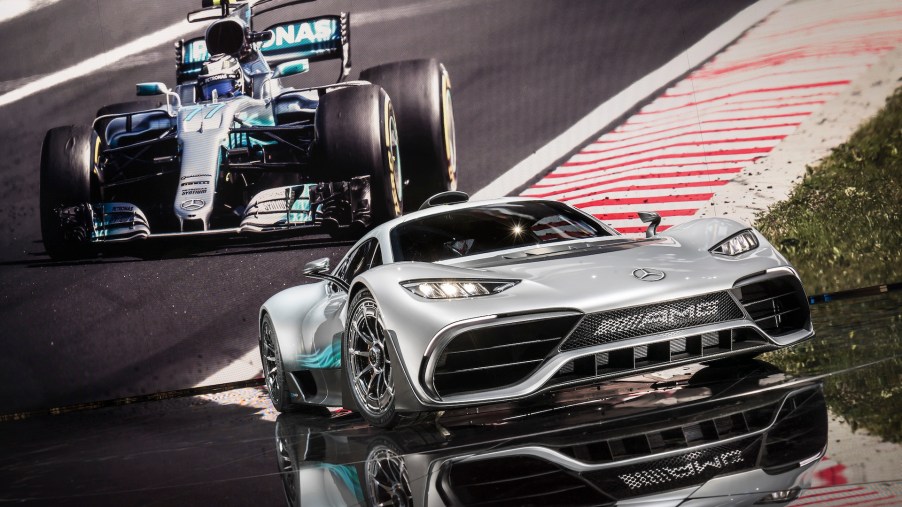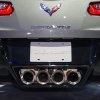
Delayed Mercedes-AMG One Hypercar and Its F1 Engine Are an Engineer’s Nightmare
When the Mercedes-AMG One broke cover during the 2017 Frankfurt Auto Show, hypercar fans were stunned by the concept. Part of that excitement came from the fact that this Mercedes-AMG concept would have near-identical aesthetics and specifications to the production model. This included the addition of an F1-derived engine in the middle.
After four years of delays and production setbacks, none of the planned 275 examples have been delivered. Today we’ll be looking at exactly what is holding this $2.72 million hypercar back.
What is a Mercedes-AMG One?
The recipe for the Mercedes-AMG One sounds fairly simple on paper. According to Car and Driver, this includes taking a 1.6-liter V6 straight from a Formula 1 car. From there, you add four electric motors to boost the total power output to over 1,000 hp. Continuing that F1 trend, this hypercar will reportedly utilize an eight-speed single-clutch automated manual transmission. A dual-clutch unit was considered, but engineers determined that it couldn’t handle the V6 engine and its 11,000-rpm redline.
Having that Formula 1 engine in the rear causes a unique problem for the Mercedes-AMG One. Since F1 engines aren’t meant to last several years and thousands of miles, neither is the one in this new hypercar. In fact, owners will have to rebuild the engine altogether every 31,000 miles or so. However, given how few miles these hypercars cover yearly, we doubt that will be a common occurrence.
In terms of performance, the Mercedes-AMG One is estimated to have a top speed of around 217 mph. The hypercar should reach 62 mph in less than 2.2 seconds, 124 mph in less than six seconds, and 186 mph in less than 11 seconds. However, as you are about to learn, things haven’t gone exactly as planned.
What troubles has this hypercar faced?
In a perfect world, the Mercedes-AMG One was supposed to arrive sometime in 2019. However, the hypercar has been continuously delayed thanks to issues with its F1-derived engine.
According to Car and Driver, the hypercar couldn’t meet noise or emissions regulations. As a result, engineers have been hard at work developing an exhaust system and a gasoline particulate filter that can comply with strict regulations. According to The Drive, this issue alone delayed the arrival of the Mercedes-AMG One by nine months.
As you might imagine, the Mercedes-AMG One needs to easily drive around town and act like a normal car in most scenarios. This is perhaps one of the biggest challenges when starting with an F1-derived engine. According to Road and Track, the 1.6-liter V6 idles at 5,000 rpm. The engineers reportedly tried to get the engine to idle at 1,200 rpm. Unfortunately, this was more challenging than expected. It is worth mentioning that this also has a direct impact on emissions figures.
When will we see it out on the road?
The latest info on the Mercedes-AMG One comes from Top Gear. As of writing, the hypercar is expected to arrive sometime in 2021. However, we don’t know exactly when or if the press will get a chance to drive it. Additionally, Top Gear reports that the One isn’t arriving alone either. In fact, there are two brand-new electrified Mercedes-Benz models expected for 2021. On top of that, there is a brand-new “E Performance” label for the brand.
For now, all we can do is hope that no other delays pop up so we can see this one-of-a-kind hypercar on the road.


